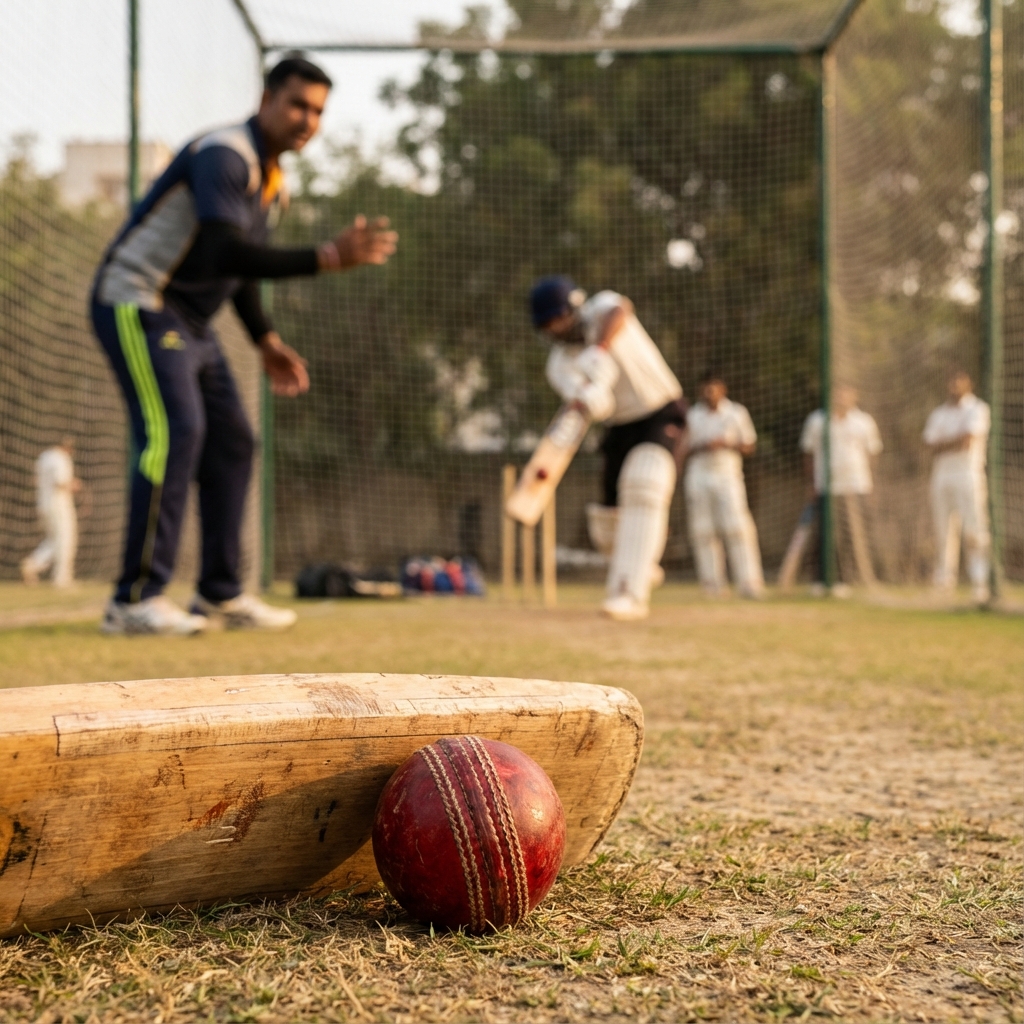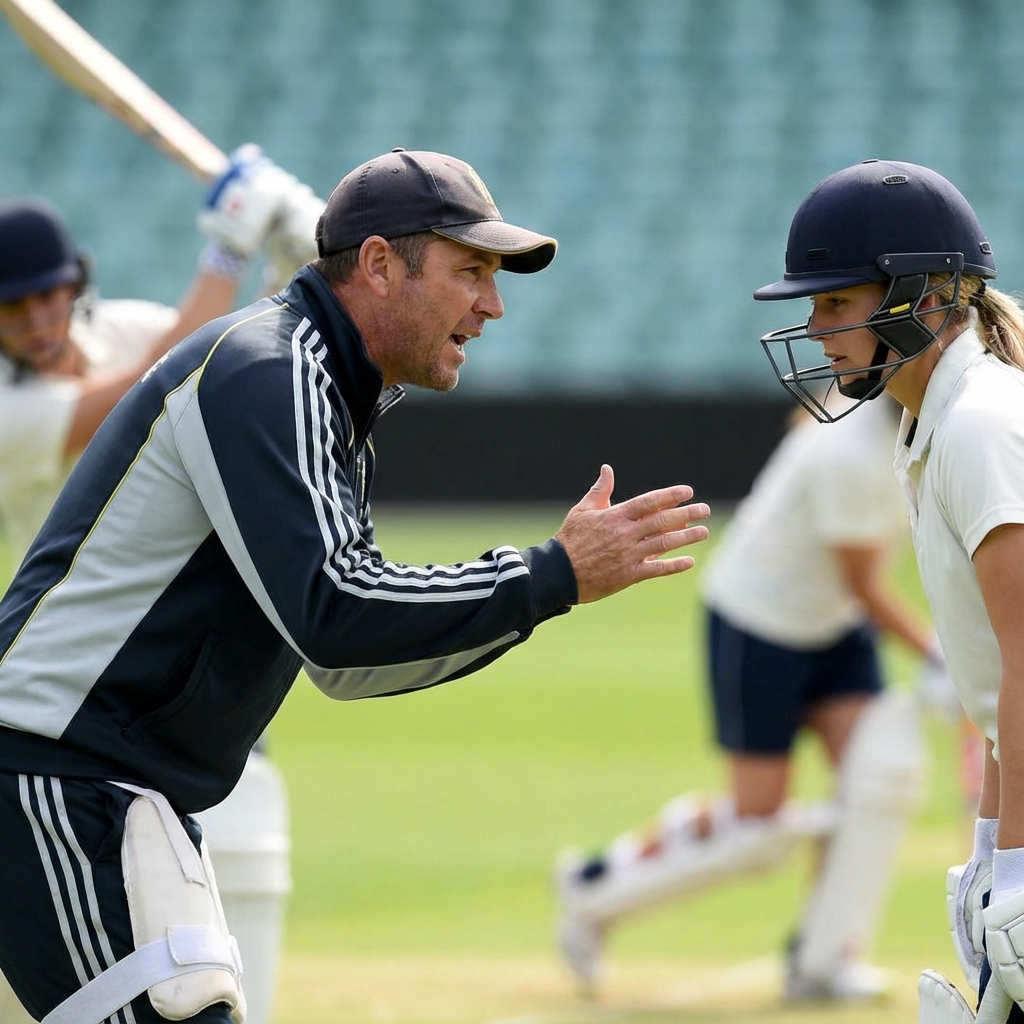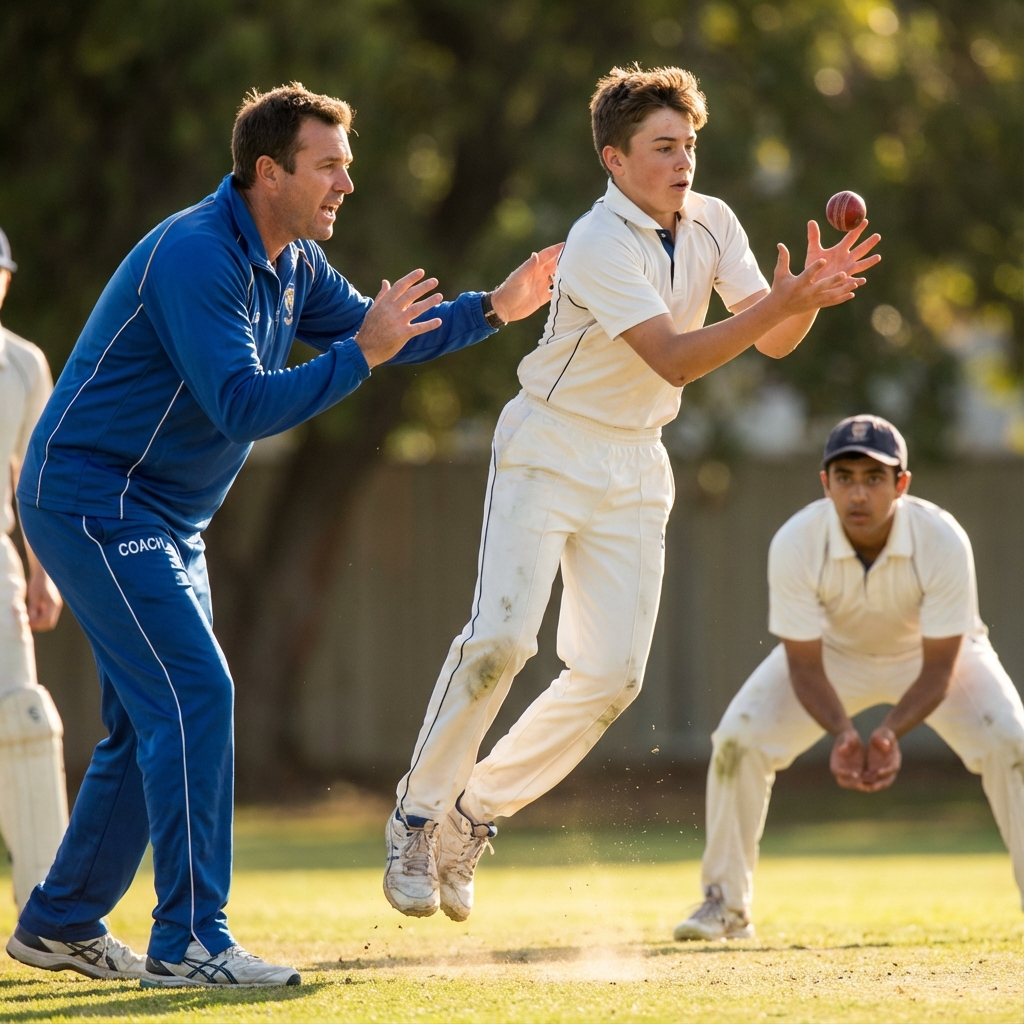what is DLmethod?
Ask a question and have it answered by Coaches from around the world and Sportplan's team of Experts.
duck worth lewis method
The Professional Edition of the Duckworth/Lewis shall be used in all matches. If any match is suspended after ithas started such thatthe number of overs available to be faced by either side is reduced from thatdetermined when the match started, the revised targetshall be computed using the computer software CODA 6.2 (or later releases) in accordance with the instructions provided with that software and displayed on the screen. Where possible, arrangements shall be made for the provision of back-up capability, in case of computer malfunction,for the operation or continued operation of the Professional Edition. In the eventof computer malfunction at any time during the match where no such provision has been made, the Standard Edition (the method in use prior to October 2003) shall be used. In the regulations given below,the tables given (including the ball-by-ball ones) and used in the illustrative examples, relate to the Standard Edition. These tables should be substituted by those appropriate to the particular match, which can be produced as directed within the software for the Professional Edition. 1. Introduction The D/L method sets revised targets in rain-interrupted limited-overs matches in accordance with the relative run scoring resources which are at the disposal of the two sides. These are notin directproportion to the number of overs available to be faced, as with the average run rate method of correction. Instead they depend on how many overs are to go and how many wickets are down when the interruptions occur. To calculate the revised targets, you need to know the resources available at the stage of the match when suspensions and resumption of play occur. All possible values of resources have been pre-calculated and these are listed in the accompanying table. The table covers each individual ball in a game of up to 50-overs per side. The figures given in the table are percentages of the resources available for a complete 50-over innings. For matches with less than 50-overs per innings before they start, the resource percentages available atthe startof an innings will be less than 100%. Butthe same table and the same method of calculation are used whatever the number of overs per innings. The single sheetover-by-over version of the table can be used for cases when play is suspended before the startof a new over. When Team 2 (the side batting second) have less run scoring resources at their disposal than had Team 1 (the side batting first), their targetis adjusted downwards using the ratio of the resources available to the two sides. Butwhen Team 1âs innings has been interrupted,itoften happens than Team 2 have more resources attheir disposal than had Team 1 and itis now necessary to adjustTeam 2âs targetupwards. In the Professional Edition the target is adjusted upwards using the ratio of the resources available to the two sides. In the Standard Edition the adjustmentis based on the runs thatwould be expected to be scored on average from the extra resources attheir disposal. The number of these extra runs required is calculated by applying the excess resource percentage to the average total score in a 50-over innings,referred to here as G50 For matches involving ICC full member nations, including Under-19 international matches, or for matches between teams thatplay firstclass cricket, the value of G50 to be used atpresentis 235. For lower levels of the game,G50should be chosen to representthe average score expected from the team batting firstin an uninterrupted 50 overs-per-innings match. For teams between associate ICC member nations,the recommended value of G50 is 190; for womenâs ODIs, the recommended value is 175.For U15 internationals, the recommended value is 200.For other levels of the game, advice should be soughtfrom the ICC. Definitions The team batting firstare referred to as âTeam 1â and the team batting second are referred to asâTeam 2â. In the table decimal fractions of an over are expressed in standard cricketnotation; i.e. 4.3 overs means 4 overs plus 3 balls. The terms âtargetâandârevised targetâ are reserved exclusively for the minimum score Team 2 need to win. As with an uninterrupted match, if Team 2 make a score which is one run shortof the target, the match is tied. The following symbols are used throughout%3A N is the number of overs per innings for the match as decided atthe momentof delivery of the firstball of the match. S is Team 1âs total score R1 is the resource percentage (relative to a full 50-over innings) available to Team 1. R2 is the resource percentage (relative to a full 50-over innings) available to Team 2. T is Team 2âs targetscore. 3.Calculation of the Percentage Resource Lostby a Suspension in Play To compensate for any loss of overs due to a suspension in play during either Team 1âs or Team 2âs innings, itis necessary firstto calculate the resource percentage thathas been loston accountof this suspension. If the suspension occurs between overs, use the sheetof the table which gives the figures for whole numbers of overs.If itoccurs mid-over, use the sheets of the table which provide the figures for each individual ball. 3.1 For the startof the suspension in play, from the table note the resource percentage thatremained for the appropriate number of overs/ball left and wickets lost. 3.2 For the resumption of play after the suspension, from the table note the resource percentage now remaining for the revised number of overs/balls leftand for the same number of wickets lost. 3.3 Subtractthe resource percentage in 3.2from thatin 3.1to give the resource percentage lost. 3.4 If a suspension in play causes the innings to be terminated, the resource percentage on resumption (3.2) is zero and the percentage lostis the resource percentage which was remaining when the suspension occurred (3.1). 3.5 If more than one suspension in play occurs,the resource percentages lost are calculated as described in 3.1 to 3.4 and are accumulated to give updated values for the total resource percentage lostor resource available for the innings. This is done after each suspension as described in 5.2and 5.5. 4. Penalties for Slow Over Rates No overs penalties are imposed for slow over rates and hence slow over rates have no effecton revised targetcalculations. 5. Calculation of Revised Targets 5.1 Note the number of overs per innings decided atthe startof the game, N. From the table note the resource percentage available to Team 1 atthe startof their innings. (For N = 50 this is 100%.) 5.2 For all suspensions and any premature termination of Team 1âs innings, calculate the total resource percentage lostusing the procedure described in section 3. Subtractthis from the starting resource percentage (5.1) to give R1, the resource which was available to Team 1 for their innings. Note Team 1âs total score, S. 5.3 There is no overs penalty for slow over rates by either side. ODI 5.4 Note the number of overs allocated to Team 2 atthe startof their innings and from the table note the resource percentage for this number of overs remaining and 0 wicketlost. This is R2, the resource percentage available to Team 2. If R2differs from R1, which will happen if Team 1âs innings was interrupted and/or Team 2âs was delayed, a revised target mustbe set. Calculate this revised target, T, as described in 5.6below. 5.5 For each suspension of play during Team 2âs innings or for premature termination of the match, update the resource percentage available, R2, by subtracting the resource percentage lostcalculated as in section 3. Calculate the revised target, T,after each suspension as described in 5.6 below. If the match has to be terminated, the resultis decided by comparing Team 2âs score atthe time with the âpar scoreâ, this being the value as calculated in the formulae for T in 5.6below butwithoutthe one run added. If itis greater,Team 2 win. If itis equal, the match is tied. If itis less,Team 1 win. 5.6 In the Professional Edition,for all values of R1and R2the revised targetis obtained by scaling Team 1âs score in the ratio of R2 to R1 i.e T = (S x R2/R1) + 1 (rounded down to a whole number, if necessary) 141 In the Standard Edition, if R2 is less than R1, Team 2âs revised targetis obtained by reducing Team 1âs score S in the ratio of R2 to R1, ignoring any figures after the decimal point, and adding one run, i.e. T = (S x R2/R1) + 1 (rounded down to a whole number, if necessary). If R2 is equal to R1,no revision is needed and Team 2âs targetis one more run than Team 1âs score. i.e. T = S + 1 If R2is greater than R1, calculate the amountof excess R2 - R1, and take this percentage of the average 50-over total, G50, to give the extra runs needed, ignoring any figures after the decimal point. i.e. T = S + (R2 - R1) x G50/100 + 1 (rounded down to a whole number, if necessary) 6. Penalty Runs 6.1 During Team 1âs innings If penalty runs are awarded to the batting side, then their score shall advance accordingly and be taken into accountwhen performing any future D/L calculation. If penalty runs are awarded to the fielding side, then any D/L calculation in between innings will be performed as normal, and their innings will commence with the score equivalentto the number of penalty runs that they have been awarded. 6.2 During Team 2âs innings If penalty runs are awarded to the batting side, then their score shall advance accordingly. These penalty runs do notaffectany subsequent D/L calculation. If penalty runs are awarded to the fielding side, then there will be no recalculation of any D/L target. Instead,the targetscore and the entire schedule of par scores will advance by the appropriate number of penalty runs. If a loss of overs occurs after such a penalty has been awarded, then the D/L targetwill be calculated based upon the original score of the side batting first, and this target, and all par scores, will then be raised by the appropriate number of penalty runs 7. The Result and its Description When a revised targethas been calculated and the match has been played outto its completion, the resultis described exactly as in the case of an uninterrupted match; if Team 2 achieve their revised targetthey win by the number of wickets they have in hand when they reach this score; if they fall shortof their revised targetby exactly one run the resultis a tie, and if they make a lower score Team 1 win by the margin of runs by which Team 2 fall shortof the score needed to achieve a tie. When a match has to be abandoned with Team 2âs innings in progress (provided sufficientovers have been bowled to constitute a viable match), the resultis decided by comparing Team 2âs score with the âpar scoreâas defined in 5.5 and the winning margin is described in terms of the number of runs by which their score differs from theâpar scoreâ, regardless of whether Team 1 or Team 2 are the victors. Whenever a completed game has involved the use of the D/L method, the description should be qualified by appending â(D/L method)â. 7.1 Examples of resultdescription (i) Team 2 are seta revised targetof 186. Butthey only succeed in making 180 in their allocation of overs. They thus fall 5 runs shortof the 185 runs needed to tie the match and the resultis described as âTeam 1 win by 5 runs (D/L method)â. (ii) Team 2 are chasing a targetof 201 in a 50-over per innings match and reach 115/4 after 30 overs when rain causes the match to be abandoned. Atthis pointthe âpar scoreâis 110. Team 2 have exceeded this by 5 runs and so the resultis described as âTeam 2 win by 5 runs (D/L method)â. Example 1 (Suspension during Team 1âs innings) In a 50 over-per-innings match,Team 1 reaches 79/3 after 20 overs and then there is a suspension in play. Itis decided that20 overs of the match should be lost, 10 of these by each team. Team 1 resumes to reach a final total of 180 in its revised allocation of 40 overs. Number of overs per innings atthe startof match, N = 50 Resource percentage available toTeam 1 atstartof innings = 100% (5.1) Resource percentage remaining atsuspension (30 overs left,3 wkts lost = 61.6% (3.1) Resource percentage remaining atresumption (20 overs left, 3 wkts lost) = 49.1% (3.2) Resource percentage lostdue to suspension = 61.6 - 49.1 = 12.5% (3.3) Resource percentage available toTeam 1, R1 = 100 - 12.5 = 87.5% (5.2) Number of overs available toTeam 2 atthe startof its innings = 40 Resource percentage available (40 overs left, 0 wktlost), R2 = 89.3% (5.4) R2 is greater than R1, i.e.Team 2 has more resource available than had Team 1, so its targetshould be increased. S = 180 Team 2âs revised target (5.6) is T = S + G50 x (R2 - R1)/100 + 1 = 180 + 235 x (89.3 - 87.5)/100 + 1 = 185 (rounded down). Example 2(delay to startof Team 2âs innings) In an English National League match (45 overs per innings),Team 1 scores 212 in its allocated 45 overs. Rain then causesTeam 2âs response to be delayed and itis decided thatitshould be shortened to 35 overs. APPENDIX 3 Bonus PointSystem 1 bonus pointfor any team that achieves victory with a run rate 1.25 times thatof the opposition. A teamâs run rate will be calculated by reference to the number of runs scored divided by the number of overs.balls faced. Where a side is all out, the number of overs to be used is the maximum number of overs thatside was otherwise eligible to face. Number of overs atstartof match, N = 45. Resource percentage available to Team 1 atstartof its innings (45 overs left, 0 wkt lost) = 95.0% (5.1). The innings was notinterrupted, so R1 = 95.0% Number of overs available to Team 2 atstartof its innings = 35 Resource percentage available to Team 2 atstartof innings (35 overs left, 0 wkt lost) R2 = 82.7% (5.4) R2is less than R1; S = 212 Team 2âs revised target (5.6) is T = S x R2/R1 + 1 = 212 x 82.7/95.0 + 1 = 185 (rounded down). Example 3 (suspension during Team 2âs innings) In an One Day International match (50 overs per innings),Team 1 has scored 250 from its allocation of 50 overs in an uninterrupted innings. Team 2 has received 12 overs and has scored 40/1. Then play is suspended and 10 overs are lost. Number of overs atstartof match, N = 50. Team 1âs inningswas uninterrupted,so its resourcepercentageavailable,R1 =100% (5.1). Resource percentage available toTeam 2 atstartof innings = 100% (5.4). Resource percentage remaining atsuspension (38 overs left,1 wktlost) = 82.0% (3.1). Resource percentage remaining atresumption (28 overs left, 1 wktlost) = 68.8% (3.2). Resource percentage lostdue to suspension = 82.0 - 68.8 = 13.2% (3.3). Resource percentage available to Team 2, R2 = 100 - 13.2 = 86.8% (5.5). R2 is less than R1; S = 250. Team 2âs revised target (5.6) is T = S x R2/R1 + 1 = 250 x 86.8/100 + 1 = 218 , and itneeds a further 178 runs from 28 overs. Example 4 (multiple suspensions and abandonment) Suppose thatin Example 3, play continues for a further 10 overs during which Team 2 takes its score on to 98/3,whereupon there is another suspension in play and 2 more overs are lost. A further 8.2 overs are bowled and Team 2 is 154/6 when rain washes outthe match. Team 1âs resource percentage is still R1 = 100%. Team 2âs resource percentage has been reduced further. Resource percentage remaining atstartof second suspension (18 overs left, 3 wkts lost) = 45.9% (3.1). Resource percentage remaining atend of second suspension (16 overs left, 3 wkts lost) = 42.3% (3.2). Resource percentage lostdue to second suspension = 45.9 - 42.3 = 3.6% (3.3). Resource percentage available to Team 2, R2 = 86.8 - 3.6 = 83.2% (5.5).










